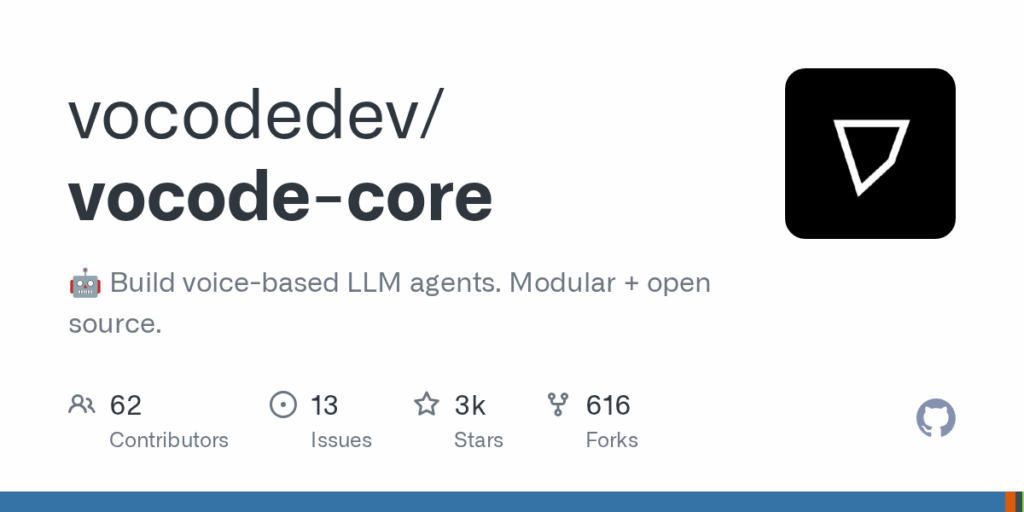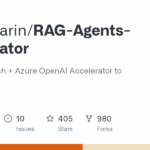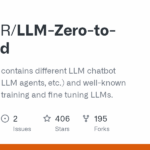vocode core
Basic Information
Vocode Core is an open source Python library for building voice-based applications that connect large language models to real-time audio input and output. It is designed for developers who want to create conversational voice experiences such as live streaming conversations with an LLM, voice-based personal assistants, phone-call agents, and integrations into conferencing platforms like Zoom. The project provides a single library with abstractions for audio input and output, conversational flow, agent configuration, and telephony hosting so developers can prototype and deploy voice-enabled LLM apps quickly. The README includes a pip install quickstart and example code that shows how to wire a microphone, transcriber, LLM agent, and synthesizer into a streaming conversation. The repo emphasizes extensibility, community contribution, and documentation to help developers extend integrations and deploy production voice agents.








